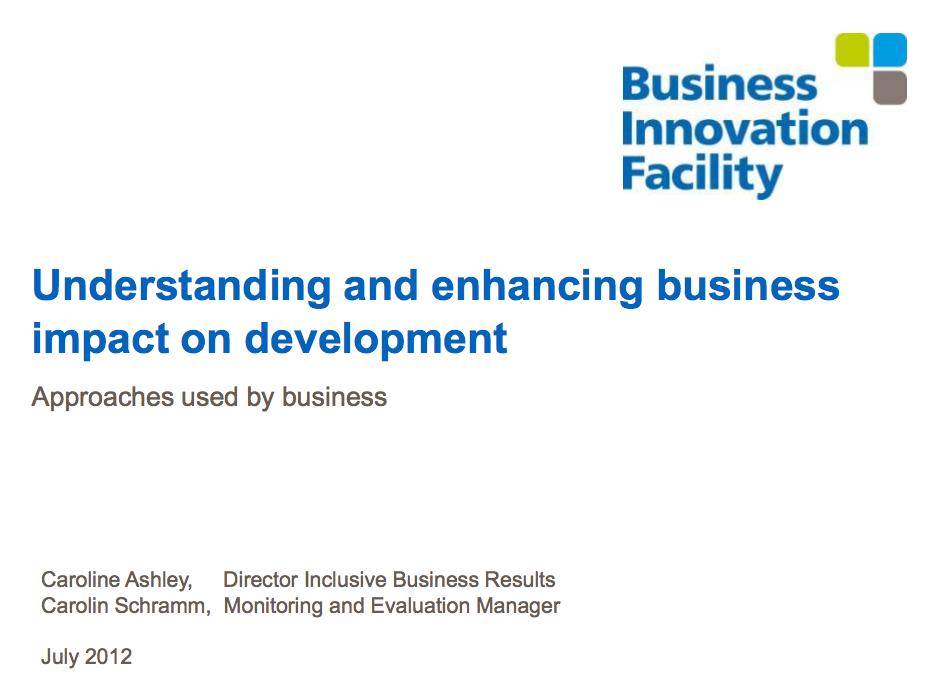Guest Post: Understanding Company Impacts on Development With a Few Useful Examples
Editor’s Note: This article has been cross-posted from Business Fights Poverty. Caroline Ashley is an independent Inclusive Business Consultant.
Pity the poor executive who is tasked with enabling a company to understand its contribution to development. A quick review of the landscape shows an array of approaches, with little discussion of their usefulness for different purposes.
That said, the range of impact reports is certainly growing. More companies are adopting what are commonly known as ‘IRIS indicators’ to track their social impact. (Impact Reporting and Investment Standards) or IRIS, indicators are a vast set of standardized metrics developed for the impact investment industry. Several multinationals, in sectors from banking to breweries, have commissioned analyses of their economic contribution – using the modelling and mulitipler approach of Ethan Kapstein.
Meanwhile, less visible on the radar but still plentiful, are analyses that map value chains, particulary in agriculture, to identify impacts on those at the bottom of the chain. The most ambitious undertake an entire poverty footprint, combining the best of qualitative and quantitative.
How useful are these? And how should a company decide what approach to use? The answer of course depends on why the company wants to assess impact. To help in understanding the options, the Business Innovation Facility has produced a two-page summary of approaches to assessing impact, with the strengths and weaknesses of each, available here. (The inital framework paper can be found here).
I find all the reports fascinating, but how many are useful? And used for what? Personally, I know that reports with lots of zeros speak loudly to Ministries of Finance and tax authorities, but tell me less about real impact on poverty reduction and HOW to BOOST it. So I have two highlights in the recent array of impact reports:
1. Development impacts of an all-inclusive hotel in Turkey were assessed by Overseas Development Institute using a value chain approach, and recommended several priority actions. The assessment was repeated six months later to capture progress, and already reported a 16 percent increase in the tangible local financial impacts (the ones that could be measured) plus progress in qualitative areas too.
2. In the Business Innovation Facility, we have been working with several companies to help them set up their Key Performance Indicators (KPIs) that combine social performance measurement into their normal commercial tracking. Sometimes this is driven by the need to assess progress in delivering a social mission, and report to shareholders. Sometimes it is shaped by the need to incorporate IRIS indicators, to boost appeal to Impact Investors. But best of all, the use of regular KPIs mean that management get regular information on social performance, whether it is planting by farmers or purchases by low-income consumers.
A handful of KPIs are of course very limited compared to an indepth poverty footprint. But as a means to internalise information into decision-making, they work for me. For more information on BIF work with companies on results tracking, visit the Impacts Network on the Practitioner Hub on Inclusive Business.
- Categories
- Impact Assessment

